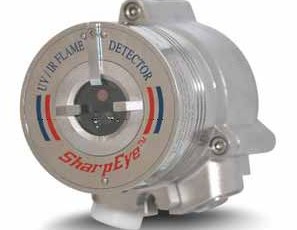The detection of combustible or otherwise unwanted gases is a huge part of keeping the oil and gas industry as safe and efficient as possible. Obviously, combustible gases are a huge hazard to a safe and streamlined work environment. This is why it is so very important to have current, well maintained, high quality detection systems that help to ensure the safety of oil and gas operations.
There are two main types of detection systems used: catalytic and infrared. Both have their pros and cons and which choice is best is dependent on the specifics of each operation.
Catalytic Sensors
Catalytic sensors are a time-honored detection technology, having successfully served its function for some 50 years. Often referred to as catalytic bead detectors, they detect heat that is generated when combustible gas is oxidized. Once tripped, the sensor sets off a warning alarm. The system can also be calibrated for multiple gases.
Catalytic sensors are also known for their superior design, which allows the systems to operate easily and efficiently for long periods of design.
The main pitfall of the catalytic sensor is the vulnerability of these systems to contamination, which can require the recalibration of the system for optimal functioning to resume.
Infrared Sensors
With this type of detection system, gas is detected though the use of two different wavelengths: one that absorbs gas and one that does not.
This allows for easy detection of changes, as well as the ability to continually monitor for a particular gas.
Main Differences
Both of these systems serve a similar function but have key differences that may make one option more attractive for one’s operations than the other.
Unlike a catalytic sensor, infrared sensors are not prone to so-called contamination or poisoning, nor do they require as much recalibration. An infrared system also offers fail-to-safe operation and can be used in environments with or without oxygen.
However, catalytic sensors are easier to use with time-honored reliability, and are known for being both affordable and long-lasting. They are also the better choice for multi-gas operations.
Catalytic and infrared sensors provide high quality, reliable sensing technologies that help to keep the oil and gas industry as safe as possible. Catalytic sensors offer time honored protection, but are prone to certain contaminations that infrared detectors are not. Conversely, infrared detectors do not have the durability or ability to operate with a multi-gas environment, making them a less attractive choice for certain operations.

